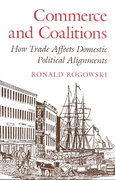Question
In Questions I through V, you will work with data relevant to the various measures of the money supply. The most relevant data sources here
In Questions I through V, you will work with data relevant to the various measures of the money supply. The most relevant data sources here will likely be:
- https://fred.stlouisfed.org/(Links to an external site.)(FRED: Federal Reserve Economic Data).
When you download data from FRED to Excel, it will automatically default to assigning the first day of the month or the first day of the quarter as the observation date to monthly and quarterly data. This is an Excel quirk. The data is actually the data for the given time period, measured either at the typically established day within the period or at the end of the period.
When we ask you for the difference between any two time points (for example, February and April, or Quarter 1 and Quarter 2 of the year), you will use the measurements for these exact months/quarters from FRED.
- By how much did the money supply measured as M2increasebetween February 2020 and April 2020? Please utilize FRED's M2 (Monthly, in Billions of Dollars, Not Seasonally Adjusted) data series (series codeM2NS) to obtain your data.
- Examining the historical trajectory of money supply M2, how long did it take for the money supply to increase from $5 trillion to $6 trillion (in years)? Please continue utilizing FRED's M2 (Monthly, in Billions of Dollars, Not Seasonally Adjusted) data series (series codeM2NS) to obtain your data.
- What percentage of the February to April 2020 increase in M2 that you computed in Question 6 can be attributed to an increase in the monetary base (money in circulation)? Please utilize FRED's Monetary Base Total data series (series codeBOGMBASE) to obtain your data. Please be mindful of any possible differences in the units of measurement between the two series.
- What percentage of the February to April 2020 increase in M2 that you computed in Question 6 can be attributed to an increase in the money market funds shares (compare 2020Q1 and Q2)? Please use FRED'sMMMFFAQ027Sseries ("Money Market Funds; Total Financial Assets, Level") to obtain your data
- Based on the quantity theory of money, which of the following statements about the potential effects ofrapid increase in money supply M2in early 2020 is (are) true?
- If total expenditure did not change, the velocity of circulation had to go down.
- If the velocity of circulation was constant, then either prices or output or both had to go up.
- If output and the velocity of money went down, the effect on prices is unclear.
- All of the above.
Step by Step Solution
There are 3 Steps involved in it
Step: 1

Get Instant Access to Expert-Tailored Solutions
See step-by-step solutions with expert insights and AI powered tools for academic success
Step: 2

Step: 3

Ace Your Homework with AI
Get the answers you need in no time with our AI-driven, step-by-step assistance
Get Started


